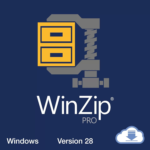Printed Circuit Boards, or PCBs, are the most common method for electrically connecting and mechanically supporting electronic components through conductive tracks, paths, or signal traces. They’re made up of insulating layers of one or more copper conductor designs. Printed wiring boards, or PWBs, are another name for them. They’re found in nearly every form of commercial electronic product on the market.
The point-to-point architecture and wire wrap are two common alternatives to a typical China PCB. Because these printed circuit boards must be appropriately designed and set out, they are costly to produce individually. However, they can become significantly less expensive and faster to create when produced in large quantities. The IPC organization sets the design and quality control requirements for PCBs used in the electronics industry.
PCB fabrication prices are determined by various elements that must be taken into account while designing them. Beginners in the sector should learn to optimize their designs while keeping cost issues in mind. Many novice designers are unaware of the importance of spacing, basic width, and other factors that significantly impact total manufacturing costs and unit price.
If you’re new to the sector and want to save money on PCB fabrication and tooling, we propose that you follow the steps outlined below:
Small Board Dimensions: When attempting to cut expenses, selecting the appropriate board size for the circuit is critical. The production costs will undoubtedly increase as the board size increases. The cost of making a unit is nearly proportional to the amount of board used.
Shapes of Boards: Because unusual forms are more expensive, you should use only standard board shapes like rectangles and squares. Furthermore, it would be best to avoid interior cuts or slots unless necessary for escalation objectives. Some China PCB shops may charge an additional fee for oddly shaped boards. We recommend using square or rectangular board forms unless you have a specific project in mind to save money.
Hole Dimensions: When creating printed circuit boards, make sure to use the larger holes, as smaller holes and annular rings result in higher expenses. The reason is straightforward, and making smaller holes necessitates greater precision, increasing the cost in various ways. Many manufacturers may charge you more if you require holes with less than 0.4 mm diameter. As a general guideline, you should consult with your manufacturer before deciding on the optimal hole size for your PCB.
Finally, the size of the copper objects and the distance between them play a role in influencing the price of printed circuit boards. The price rises as the distance between the objects narrows, and this makes sense because narrower spacing equates to more precision, which drives up production costs.
ChinaPCBOne Technology LTD. is the author of this article on PCB Fabrication. Find more information, about PCB Prototype.






